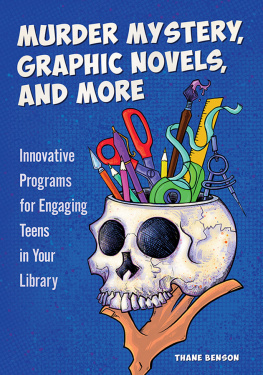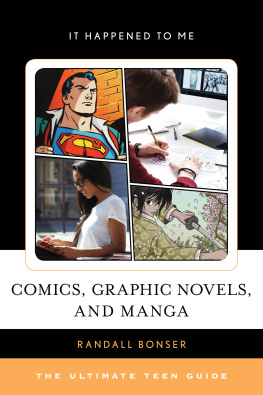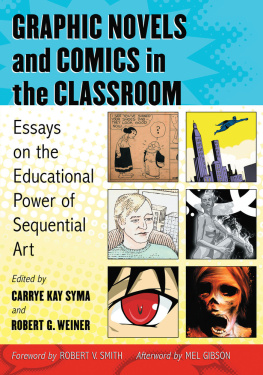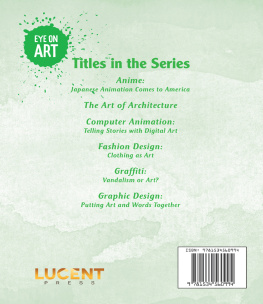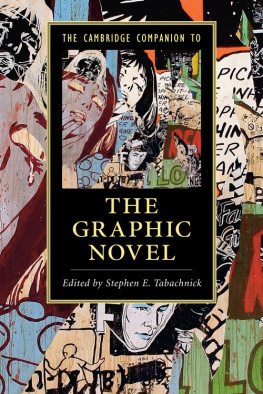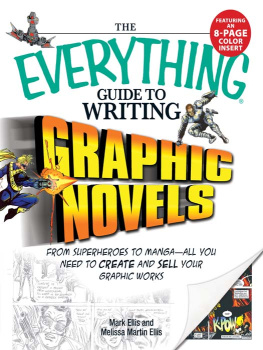You Can Write a Graphic Novel!
Comic books, also called sequential art or graphic storytelling, are currently a billion dollar annual industry. Books of sequential art, popularly known as graphic novels, fill bookstores and libraries all over the world. In Write a Graphic Novel in 5 Simple Steps, author Jeffrey Edward Peters shows young, aspiring writers how to create new universes of their own through the unique combination of words and pictures that make a graphic novel.
Using a simple approach and some basic advice from comic book professionals, Jeffrey Edward Peterss book is a good starting point for getting your story told.
Michael Kraiger, cartoonist and instructor, The Kubert School
About the Author
Jeffrey Edward Peters is an actor, director, writer, and artist who lives in L.A. and N.Y.C. He is the creator of Comicology.TV and the writer/illustrator of Melvin G. Moose, Toode PI.

By 1960, Stan Lee was sick and tired of comic books. He had been writing and editing for Atlas Comics for twenty yearssince he was seventeen years old. At this point, he was just churning out formula horror tales, romances, and wild adventures of monsters from outer space. Lee was ready to quit and try something else. Then fate intervened.
Just as he was thinking about getting out, Lees publisher asked him to create a new team of superheroes. While very popular in the 1940s, the superhero genre had been reduced to just three published characters for most of the 1950s: Superman, Batman, and Wonder Woman. But DC Comics had recently found success with superheroes againparticularly with their new superhero-team comic, Justice League of America. Lees publisher wanted to jump on the trend and make a quick buck. Ultimately, Lee agreed to write the new superhero team but only if he could do it his way.
Using a new combination of science fiction, romance, and monsters, Lee and illustrator Jack Kirby created the Fantastic Four. The characters had no costumes, no secret identities, and argued just like a real family. The success of this new approach to superheroes led Lee to launch Spider-Man, Hulk, Daredevil, The X-Men, and many other popular titles. Lee convinced his publisher to rename the company Marvel Comics, with himself serving as editor in chief. By treating superheroes as flawed people with everyday problems and failings, Stan Leealong with his cocreators Jack Kirby and Steve Ditkoreenergized the genre and revolutionized the comics industry.
And to think, Stan Lee was just about ready to quit. It just goes to show that life, just like comics, has many surprising twists and turns. Opportunity and inspiration can happen any time, often when we least expect them.
Comics, also called sequential art, are currently a billion-dollar annual industry, with film adaptations of comics making more than $10 billion in the last two decades alone. Bookstores have large sections dedicated to graphic novels, with separate shelves for children/young teens and for adults. Local comic-book stores and libraries are stuffed to the ceiling with paperback and hardcover collections of comics and manga.
Men and women working in the professional world of comics have lifelong careers doing what they love, combining words and pictures to tell stories and share ideas. In todays comic-book marketplace (represented mainly by Marvel and DC Comics), you need executives, a publisher, an editor in chief, an editor, a writer, a penciller, an inker, a colorist, a letterer, a printer, a marketing department, a distributor, and lots and lots of buyers and fans to publish a graphic novel. But for the purposes of this book, we will focus on the basics of writing and illustrating. Even if you find another artist to draw your story for you, you will still have to publish, market, and possibly sell the work yourself. In the comics community, this is known as being independent, or self-publishing.

Comics language can be a bit confusing. For example, a comic book is not really a book; nor is a graphic novel really a novel. Books, whether paperback or hardback, are bound and have spines. Comic books, however, are stapled together. In reality, theyre more like magazines than books. Still, the term comic book persists.
A novel is a work of prose fiction, usually between 30,000 and 100,000 words in length. Some graphic novels are similar to prose novels, but not always. Yet again, the term graphic novel persists. Any comic published or collected into book form is still, at this point, largely referred to as a graphic novel.
Pioneering comic artist Will Eisner coined the term sequential art to refer to comic art. He likely did this because the term comics was too widely viewed (in the United States, at least) as something just for kids. (Its likely the term graphic novel was invented for this same reasonbecause it sounded more adult and serious than comic book, and their creators were hopeful of reaching a more adult audience.) Sequential art is any art that tells a story through pictures that are viewed in an ordered sequence. All comic art can be referred to as sequential art or, more simply, a comic.
If you already love to read and write, youre well on your way to becoming a comic writer or illustratorespecially if you like comic strips and comic books. But if all you read are comics, youre not going to be a very good writer or illustrator in any medium. As famous comic writer/artist Frank Miller once noted early in his career: Its the duty of someone who works in a given form to study other related forms and bring something of them to his work. Ive seen countless Alfred Hitchcock films, which provide a lot of material on different levels, including the use of light and shadow. Miller was discussing his work as illustrator on the comic book Daredevil. Years later, however, he actually did work as a big-budget film director.
In addition to comics, you should sample film, television, novels, short stories, poetry, playsevery form of art, basically. Only by taking a wide sample of different art can you make informed decisions about how best to express yourself as an artist and create the best work you can. This holds true for all artists, reallybut especially so for a comic artist. This is because comics naturally combine both text and images, two of the primary forms of artistic expression.
The genre possibilities are many. Superheroes and funny animals abound in comics. In addition, there are many autobiographical and biographical graphic novels. Theres also horror, romance, mystery, fantasy, and science fiction. All these genres translate easily into the comics form. Some of the best comics will often combine elements from many different genres.

Steve Gerber was a comics writer best known for his creations Howard the Duck and Omega the Unknown. Later, he also worked as a television writer. As they are both visual mediums, comics and film have some key similarities. But each also presents different challenges. An interviewer once asked Gerber about the difference between the two forms. Gerber responded:


